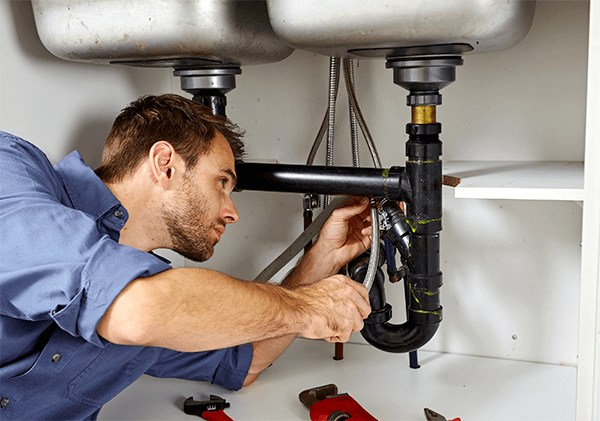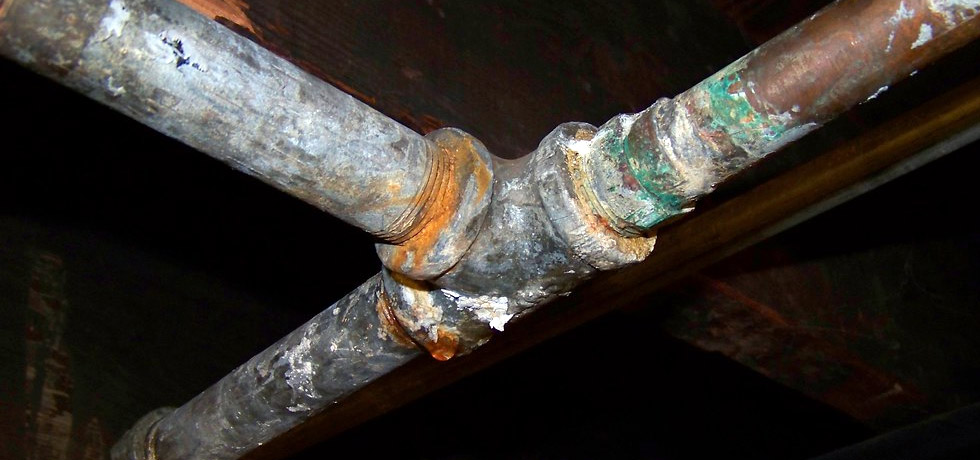Handling Plumbing Issues in Older Homes: Expert Tips
Handling Plumbing Issues in Older Homes: Expert Tips
Blog Article
We have unearthed the article on Plumbing Problems In Old Homes below on the web and accepted it made good sense to write about it with you on this page.

Older homes usually include beauty, personality, and history, yet they can likewise bring a host of pipes problems. Whether you're dealing with maturing pipelines, low water stress, or leaks, recognizing exactly how to address these typical problems is crucial to keeping a safe and useful home. In this guide, we'll discover the typical pipes difficulties faced by older homes and supply practical remedies to keep your pipes in leading shape.
Understanding Usual Plumbing Problems
Aging Pipelines
One of one of the most common concerns in older homes is aging pipelines. Relying on the age in which your home was constructed, the pipes may be made from products that have degraded over time, such as galvanized steel, cast iron, and even lead. These products can corrode, become weak, or create leakages, resulting in water damages and possible health hazards.
Water High Quality Screening
Older pipelines can influence the quality of your water. Conduct a water high quality examination to look for contaminants such as lead, rust, or other pollutants that might be presented by maturing pipes.
Solutions for Common Plumbing Problems
Changing Aging Pipelines
If your home has old, weakening pipes, take into consideration changing them with modern materials like copper or PEX. This can be a substantial investment, but it will stop future concerns and boost the safety and integrity of your pipes system.
Dealing With Low Water Pressure
To repair low water pressure, begin by cleansing or changing old components and removing mineral buildup in the pipes. If the problem persists, it might be essential to change areas of rusty pipelines.
Fixing and Changing Dripping Pipelines
For tiny leakages, you can make use of pipeline clamps or epoxy putty as a short-lived solution. Nonetheless, it's best to replace leaking pipes entirely to avoid more damages.
Upgrading Fixtures
Updating old components to modern-day, water-efficient designs can enhance your home's plumbing performance and minimize water usage. Search for fixtures with the WaterSense label for the best performance.
Managing Pipe Deterioration
If your pipelines are rusted, replacing them with corrosion-resistant materials like copper, PVC, or PEX is the best solution. Normal inspections and water top quality upkeep can help prevent better rust.
Low Water Stress
If you're experiencing low tide stress, it could be as a result of natural resources, corrosion inside the pipelines, or old components that are no more functioning successfully. This can be a major inconvenience, specifically in areas like showers and sinks.
Leaking Pipelines
Leakages are another constant issue in older homes, often triggered by corroded or damaged pipes. Even tiny leaks can bring about considerable water damages, mold development, and enhanced water expenses otherwise dealt with promptly.
Out-of-date Components
Out-of-date pipes fixtures such as faucets, toilets, and showerheads not just look old but might also be much less efficient, susceptible to leakages, or inappropriate with contemporary plumbing criteria.
Pipe Deterioration
Corrosion is an usual problem in older pipelines, particularly those made from galvanized steel or actors iron. Corroded pipes can limit water circulation, cause staining, and eventually cause leakages or pipe ruptureds.
Evaluating the Problem of Your Plumbing
Checking Visible Pipes
Beginning by inspecting any type of visible pipelines in your home, such as those in basements, crawl spaces, or under sinks. Seek signs of rust, leakages, or rust, which can show underlying issues.
Looking for Leakages
Check for leaks by checking locations around taps, commodes, and under sinks. You can also monitor your water meter prior to and after a duration of no water use to discover surprise leakages.
When to Call an Expert
While some plumbing issues can be handled with do it yourself services, there are times when it's best to contact an expert. If you're managing major leaks, substantial corrosion, or are unclear about the condition of your pipes, a certified plumbing technician can supply experienced assessment and repair work.
Preventive Maintenance Tips
Routine Assessments
On a regular basis evaluate your pipes system for indicators of wear and tear. Catching issues early can prevent costly repairs down the line.
Water Pressure Regulation
Guarantee your water pressure is within the recommended range to avoid stressing your pipelines and components. A plumber can install a pressure regulatory authority if needed.
Water High Quality Maintenance
Install water filters or conditioners if your water quality is poor. This can secure your pipes and fixtures from damage brought on by tough water or pollutants.
Positive Pipe Replacement
If your home has older pipes, consider aggressive substitute prior to major issues emerge. This can conserve you from emergency situation repair services and water damage.
Final thought
Managing pipes problems in older homes requires a mix of caution, precautionary maintenance, and timely upgrades. By understanding the common obstacles and recognizing when to seek professional help, you can guarantee your plumbing system remains useful and reliable for several years to come.
Common Plumbing Issues in Older Homes and How to Fix Them
Owning an older home in Australia comes with its unique charm and a set of challenges, especially when it comes to plumbing. The Sunshine Coast has many older properties that can harbour plumbing problems that aren t just inconvenient but potentially costly. Here s a look at some common plumbing issues in older homes and expert advice on how to handle them.
Outdated Piping Materials
Many older homes were built with galvanised steel, cast iron, or even lead pipes, materials that are far from ideal by today s standards. Galvanised pipes are prone to corrosion and clogging, while lead pipes pose serious health risks.
How to Fix:
Replacing old pipes is a job for a professional. Upgrading to copper or PVC piping not only enhances water quality and flow but also increases the property s safety and value. If you suspect your home has outdated materials, a licensed plumber can conduct a thorough inspection and recommend the best course of action.
Corrosion and Pipe Degradation
Over time, exposure to water and minerals can cause pipes to corrode, leading to leaks, bursts, and water contamination. Corrosion is especially common in homes over 50 years old.
How to Fix:
Regular inspections can catch early signs of corrosion. If corrosion is found, the affected section of piping often needs to be replaced. For homes with extensive corrosion, a complete plumbing overhaul might be necessary. It s crucial to consult with a plumbing expert to understand the extent of the issue.
Tree Root Intrusion
Older neighbourhoods usually have mature trees whose roots can intrude into pipe lines, causing blockages or damage. This is particularly problematic for sewer lines, where roots seek out water sources.
How to Fix:
A plumber can use a specialised camera to inspect sewer lines for root intrusion. If roots are a problem, methods like root cutting or hydro-jetting can clear the obstruction. In severe cases, part of the pipe may need replacing. Consider root barriers around the piping to prevent future issues.
Inadequate Water Pressure
Low water pressure in older homes can be due to various factors, including corroded water lines, sediment build-up in pipes, or outdated fixtures.
How to Fix:
First, check if the low pressure is isolated to one area or throughout the house. Replacing old fixtures can sometimes resolve the issue. However, if the problem is more widespread, it might be due to sediment or corrosion. Flushing the system or replacing the affected pipes usually restores normal pressure. Again, a professional assessment is advisable.
Outdated Fixtures
Older homes often feature fixtures that are not only visually dated but functionally inefficient. This includes everything from toilets and taps to showerheads and washing machine hoses.
How to Fix:
Updating these fixtures can improve both water efficiency and the aesthetic appeal of your home. Modern fixtures are designed to conserve water, which can significantly reduce your water bill and lessen your environmental impact.
Conclusion
Maintaining the plumbing in an older home requires a proactive approach. Regular checks and updates are key to preserving these beautiful properties. If you re facing plumbing issues in your older home, it s best to call on experienced professionals like Green & Gold Plumbing & Gas. With the right expertise, even the most daunting plumbing problems can be resolved, ensuring that your home s character is maintained while its functionality is enhanced.
https://gandgplumbing.com.au/common-plumbing-issues-in-older-homes-and-how-to-fix-them/

As a keen reader about , I was thinking sharing that piece of content was really useful. In case you liked our post kindly make sure you remember to pass it around. I praise you for your time. Come back soon.
Website Report this page